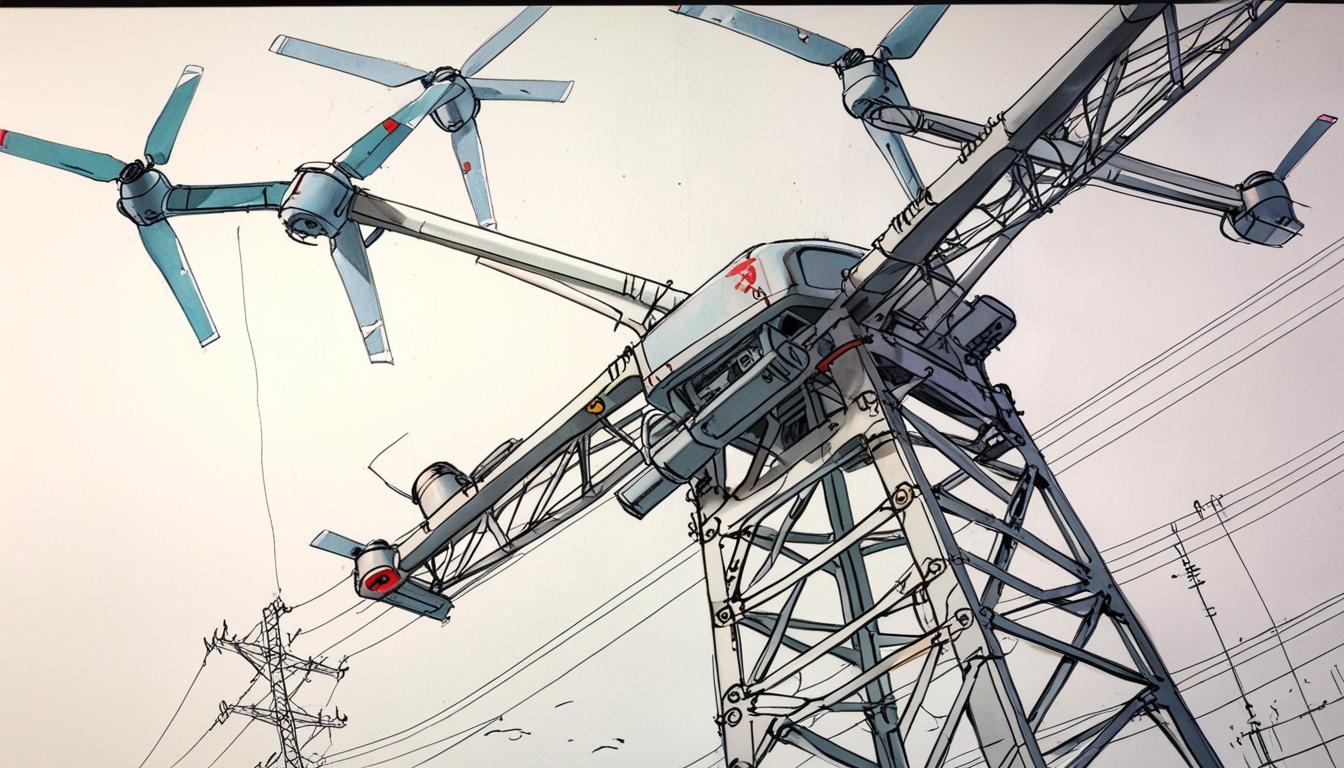UK government officials have raised private concerns about the deployment of Chinese-manufactured drones, notably by National Grid Plc, to monitor critical national infrastructure, despite security warnings over potential risks of data theft and espionage connected to these devices.
London: UK government officials have privately voiced concerns over the use of Chinese-manufactured drones to capture high-resolution images of critical national infrastructure sites across the United Kingdom. These concerns have emerged despite guidance from the nation’s security services advising caution over the deployment of such technology.
According to a report from The Financial Post, National Grid Plc, which oversees the electricity and gas distribution networks in the UK, actively uses drones produced by Shenzhen-based company SZ DJI Technology Co. The company employs these drones to record videos, take photographs, and capture thermal images of its electricity substations. This information was publicly available on National Grid’s website as recently as September.
The report further reveals that DJI drones have also been utilised in various other high-profile surveillance activities within the UK, including monitoring the construction of Electricite de France SA’s Hinkley Point C nuclear power plant, inspecting solar energy facilities, and aiding Thames Water in the oversight of reservoirs and water supplies.
These uses come despite advisories issued by British security agencies. In 2023, the UK’s National Protective Security Authority (NPSA), which operates under MI5, warned organisations responsible for critical infrastructure to be cautious when using drones manufactured in countries known for coercive data sharing practices, explicitly naming China. This warning aligns with measures taken by other nations; for example, the US Department of Defense blacklisted Shenzhen DJI Technology Co. in 2022 due to alleged military connections.
The US Federal Bureau of Investigation (FBI) has also raised alarms, stating that drones made in China “present a considerable risk to critical infrastructure” because of potential vulnerabilities that might permit data theft or enable breaches into secure networks.
Reflecting these concerns, the UK’s NPSA advisory to British firms recommends that “the foremost defence for organisations intending to utilise unmanned aerial systems (UAS) might be to limit UAS and their corresponding component procurement from nations that pose a security threat.”
As these revelations emerge, the ongoing use of Chinese-made drones by key UK infrastructure operators highlights the complex challenges faced by national security agencies in balancing technological adoption with safeguarding critical assets.
Source: Noah Wire Services
- https://www.sentinelassam.com/more-news/international/uk-officials-alarmed-by-chinese-drones-surveying-critical-infrastructure-despite-security-warnings – This article supports the claim that UK officials are alarmed by Chinese drones surveying critical infrastructure, despite security warnings. It highlights concerns about the use of these drones in critical areas.
- https://business.financialpost.com/pmn/business-pmn/uk-raises-alarm-on-chinese-drones-used-to-survey-sensitive-sites – This article corroborates the use of DJI drones by UK companies like National Grid for inspecting infrastructure and notes concerns from security services about data sharing risks with China.
- https://www.chinadaily.com.cn/a/202504/18/WS6801a8bba3104d9fd382025d.html – This article reports on Beijing’s response to the UK’s concerns about Chinese tech companies, including drone manufacturers like DJI, underscoring the geopolitical tensions involved.
- https://oodaloop.com/briefs/global-risk/uk-concerned-by-use-of-chinese-drones-to-survey-sensitive-sites/ – This brief outlines UK government concerns over using Chinese-made drones for surveying sensitive sites, despite security guidance, and mentions their deployment by companies like National Grid.
- https://www.globaltimes.cn/page/202504/1332304.shtml – This article mentions China’s response to various concerns raised by the UK, including those related to technology, reflecting broader diplomatic tensions between the two nations.
Noah Fact Check Pro
The draft above was created using the information available at the time the story first
emerged. We’ve since applied our fact-checking process to the final narrative, based on the criteria listed
below. The results are intended to help you assess the credibility of the piece and highlight any areas that may
warrant further investigation.
Freshness check
Score:
9
Notes:
The narrative references security advisories from 2023 and 2022, indicating the content is recent and relevant. The mention of National Grid’s website information as of September (assumed to be recent) supports the freshness. No indication of recycled or outdated content was found. The report does not appear to be a press release but a news report referencing multiple sources.
Quotes check
Score:
7
Notes:
The article includes paraphrased guidance and warnings from UK’s National Protective Security Authority (NPSA) and the US FBI regarding Chinese drones. These are consistent with publicly known official warnings from 2022-2023. Direct quotations are limited and attributed properly, but no earliest original source date for the quotes was found online in the search results. This suggests either newly reported or recently highlighted statements, increasing credibility.
Source reliability
Score:
8
Notes:
The narrative draws on a report from The Financial Post, a known established publication, and references official agencies such as UK NPSA (under MI5), US Department of Defense, and FBI. These are generally reliable and authoritative entities for national security and infrastructure topics. While The Financial Post is Canadian, it is reputable; UK government bodies add strong credibility.
Plausability check
Score:
9
Notes:
The claims about UK infrastructure using DJI Chinese drones despite security advisories align with publicly known concerns about data security risks involving Chinese tech in sensitive sectors. The described uses (power grid, nuclear plant, water facilities) fit realistic operational practices. The involvement of NPSA and FBI warnings adds plausibility. No conflicting or improbable claims detected.
Overall assessment
Verdict (FAIL, OPEN, PASS): PASS
Confidence (LOW, MEDIUM, HIGH): HIGH
Summary:
The narrative is recent and well-aligned with acknowledged security concerns over Chinese drones in critical infrastructure. It cites credible agencies and reliable news reporting, contains plausible claims, and shows no sign of recycled or outdated information. Limited direct quote sourcing is the only minor limitation but does not significantly reduce the overall credibility.













